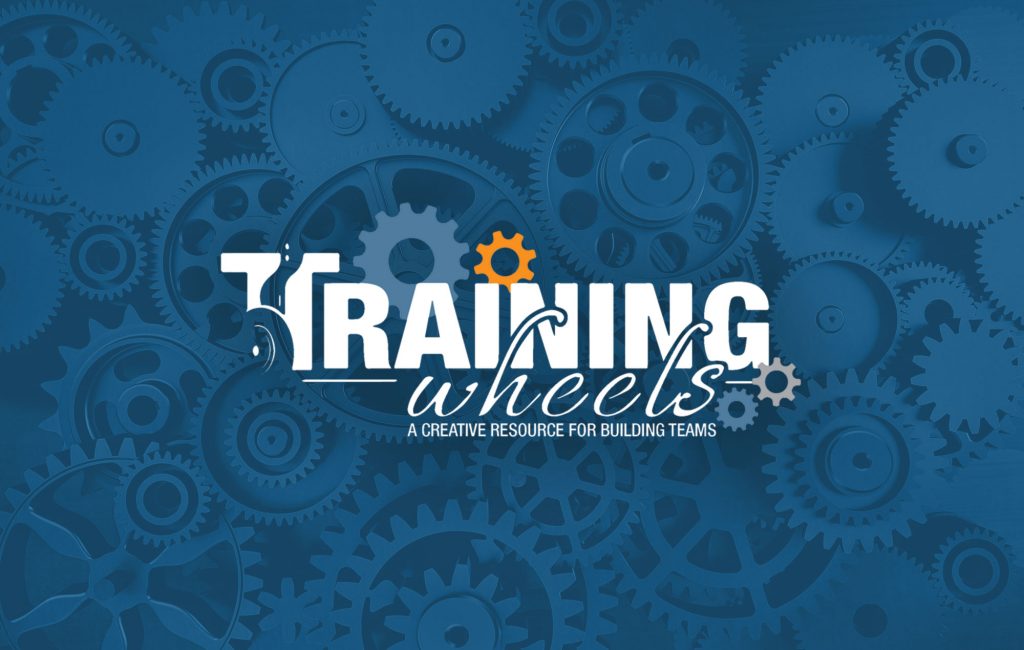
The Elephant In the Room…
Have you ever in the middle of facilitating a program, and you can tell there is a big elephant in the room that no one is talking about? I’ve definitely been there, and I have one tool that I always keep in my toolbox that is my go-to activity to help surface the elephant. The Pocket Processor. This round deck of cards uses the Ying Yang metaphor and has two different behavior preferences written on each card. For example, one of the cards in the picture has these two behaviors printed on it: Enjoying Chaos / Enjoying Order. I use these cards as my question prompters to allow people to reflect on what their behaviors are. I did an article on the Pocket Processor tool a few months ago with a different activity I like to do using these cards, called the Human Continuum. (Click here to read that article.)
For The Elephant in the Room activity, divide the group into groups of 4-5 people. Keeping the size of the groups to 4-5 people is important, so each person provides equal input. Too many more than that and it is easy for people to silently bail on the process and let other people do the talking. Randomly select 8-10 of the cards and place them face up on the table or floor in the middle of the group. (There are 52 cards in each deck, so depending on the size of your group, you might need 2 decks.) Then ask the group to peer over the different behaviors listed on the cards, and come to consensus on two cards. The first: What is one thing we are doing well as a team? And the second: What is one thing we need to work on? …And right there, you will surface the elephant.
How does this work, you ask? Well, the behaviors that are listed on these cards are not easy categories to just bring up in normal conversation, unless you have a reason. By providing structure around the conversations, and a plan for how to deal with them when they surface, is key to making this work.
Once you have the cards on the table (literally and figuratively), invite them to spend a good 20 minutes discussing each category thoroughly. By asking them to come to consensus on these two cards means they actually have to discuss ALL of the behaviors, not just a few of them. So if you have 8 cards in front of the group, they actually have 16 behaviors they need to discuss. As they are deep in their discussions, walk around the room and listen in on some of their conversations. It’s fascinating to hear some of the same discussions going on in the various small groups.
After 15 minutes, check in with each small group and give them a 5-minute warning. When time has expired collect the ‘discarded cards’ from each group and prepare the group for reporting out their findings. Provide two separate areas to record what is said (like a white board or poster paper). Make one list: Things we are doing well, and the other list: Things to work on. Ask each group to give a brief report on how they came to consensus on their two cards and capture what is said on your white board or poster paper. If you have a group of 20 people, and 4 small groups, then you’ll end up with 4 reasons to celebrate and 4 things to set action plans and goals around.
What I love about this process is that the areas they think they need to work on came from them, not from me. It’s not a consultant coming in and trying to tell them what they need to celebrate or what they work on, it’s real examples and issues coming from them. I’ve always found that the more you invite your participants to help create the experience, the more buy-in they have, and the more they get out of the day. By creating space to talk about things that are working, and things that are not working, you help them tackle the issues head on (elephants!) that otherwise might be left unsaid.
When helping them set goals and action plans around the things they need to work on, be sure to ask questions like:
• What’s it going to look like if it’s working?
• What’s it going to look like if it’s not working?
• How are you going to hold one another accountable if it’s not working?
• Who is the point person?
• What is a realistic timeframe to achieve this goal?
• How would it affect team performance if we could move this to the ‘Things we are doing well’ page?
The idea of proactively surfacing dysfunction may not appeal to everyone, but the goal in surfacing it is to help make it better. Buddha put it most eloquently when he said, “Three things cannot be long hidden: the sun, the moon and the truth.” The elephant will make itself known at some point, and the longer we put it off, the less productive we are and the more time we take away from what the company mission.
Enjoy!
Have fun out there,
Michelle Cummings
Michelle
Michelle Cummings
Owner/Trainer/Big Wheel
Training Wheels
www.training-wheels.com

Founder / Facilitator / Big Wheel of Training Wheels